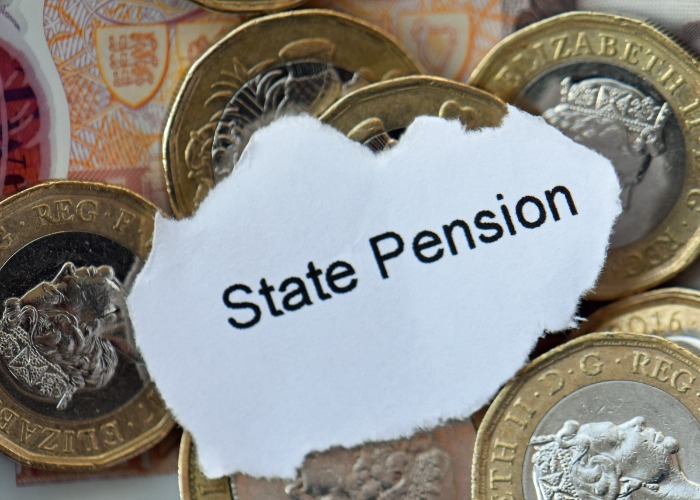Opinion: pitiful payments, dwindling public funds, frozen Income Tax thresholds & more reasons the State Pension is broken

With the gap between the richest and poorest pensioners widening, we reveal six reasons the State Pension system is desperately in need of change.
Every week it seems like there is a depressing new statistic exposing the level of pensioner poverty in the UK.
Most recently, think tank the Institute for Fiscal Studies reported that the gap between the poorest pensioners and their richest peers is growing at an alarming rate.
According to the findings, the average income of the poorest pensioners has increased by just 5% since 2011 – compared with 12% for their wealthier counterparts and 13% for the working-age population.
With this in mind, we believe addressing the flaws in the State Pension system ought to be an urgent priority for the new Government.
Here are six of the most pressing issues.
5 mistakes that will leave you poorer in retirement
1. Funding is running out
One of the biggest threats to the State Pension system is the very real possibility that the well may soon run dry.
According to research from thinktank The Adam Smith Institute, the National Insurance Fund, which covers the costs of State Pensions, could be empty by 2035.
These stats are extremely alarming for the millions of people who are relying on the benefit to either partially or fully fund their retirement.
In fact, the situation has reached such a crisis that some argue that younger workers may not be able to rely on a meaningful State Pension for their retirement.
See how much tax-free cash you could release from your home with Key (affiliate link)
2. Payment rates are poor
Let’s be honest, the amount that State Pensioners receive in the UK is a pittance, with those on the full New State Pension receiving £11,502.40 per year.
In fact, research from Money Mail last year ranked the UK as the least generous nation for State Pensions based on data from major European countries, the US and Australia.
If you’re worried about making ends meet in retirement, there is help available that could help ease (some of) the burden.
3. Too many retirees are paying tax
Frozen Income Tax thresholds are only making the situation worse by effectively forcing more and more retirees into paying tax on the little money they have coming in.
At present, the threshold at which we start paying tax on our income is £12,570 – just over £1,000 more than the full New State Pension of £11,502.40.
This means that even the most modest of additional income – or small increases to the State Pension – could push more pensioners into paying tax.
Worryingly, the threshold is set to remain at its current level until 2028.
In fact, figures from the House of Commons reveal that an additional 1.6 million pensioners will be paying Income Tax in the next four years as a result of the freeze.
How pensioners could beat the stealth income tax rise
4. The goalposts keep shifting
It isn’t just today’s retirees who are being let down by the current system.
For many of those still in employment (and especially younger workers), it seems as though the goalposts keep moving when it comes to the State Pension age.
Under current rules, the retirement age will rise to 67 between 2026 and 2028 and 68 between 2044 and 2046.
However, younger Brits shouldn’t necessarily take this as a guarantee for their future as the legislation also allows for a regular review of the retirement age (at least once every five years).
And with public funds fast depleting, many fear that further increases are almost inevitable – and may come sooner than currently planned.
5. Pension Credit take-up is shockingly low
While there is support available for the most hard-pressed pensioners, many are failing to access all the help available.
Under the Pension Credit system, the DWP will increase retirees’ incomes to a minimum of £218.15 for a single person or £332.95 for a couple.
Additionally, those receiving Pension Credit are eligible for support with Council Tax, heating and medical costs.
Worryingly, however, take-up of this often much-needed benefit is painfully low.
In fact, an estimated 850,000 pensioner households are believed to be missing out.
6. There isn’t just ‘one’ State Pension
And it doesn’t help that when we talk about the State Pension, we’re actually referring to two systems: one for those retired before April 2016 and another for those who reached State Pension age after this date.
Under the New State Pension system, younger pensioners typically receive a flat rate, which is determined by their National Insurance record.
However, the situation is more complicated for those who reached retirement age before April 2016.
Under the old system, the amount a person receives is divided into two parts: a Basic element based on National Insurance contributions and Additional State Pension tied to in-work earnings and the receipt of certain benefits.
And to make matters worse, the Additional State Pension has gone by various other names in its lifetime, including State Second Pension (S2P) and State Earnings-Related Pension Scheme (SERPs),
Put simply, it’s just too confusing, which leaves many retirees unsure of their entitlement and lacking the confidence to challenge their pension amount.
Shock State Pension gap: £1,000 a week for some, 10p for others
Have your say
Does anything particularly annoy you about the State Pension? Perhaps you think the entire system is a shambles. Or maybe you believe that we all have a responsibility to save towards a private pension.
We’d love to hear your thoughts in the comments below.
Most Recent
Comments
-
The outgoing Tory Govt did much to improve both state and private pensions during their 14-year term. Whereas in the first 5 months of this Labour Govt, Starmer and Reeves have given pensioners a good kicking. Interestingly though, Starmer's pension seems to have escaped his own tax rises...
REPORT This comment has been reported.
Do you want to comment on this article? You need to be signed in for this feature









17 March 2025